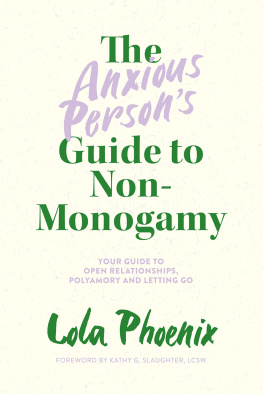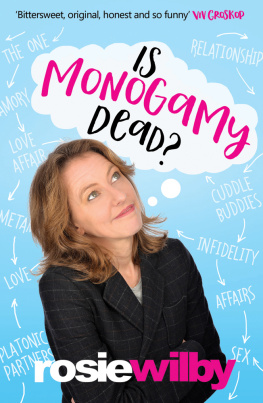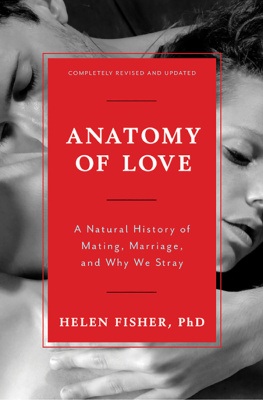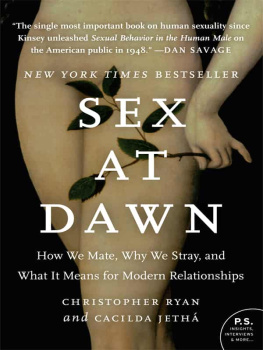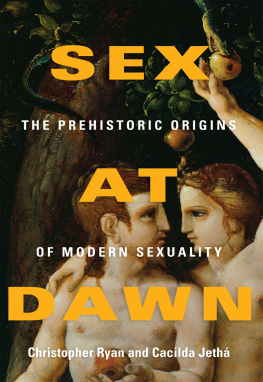The Death of Sex and the Demise of Monogamy
TheNew Normal
Whatever Happened to Marriage?
The ancient institution of monogamous marriage is ill-suitedto the exigencies of modern Western civilization. People of bothgenders live and work longer (which renders monogamyimpracticable); travel far and away frequently; and are exposed totempting romantic alternatives via social networking and in variousworkplace and social settings.
Thus,even as social monogamy and pair commitment and bonding are stilllargely intact and more condoned than ever and eve as infidelity isfervently condemned, sexual exclusivity (mislabelled sexualmonogamy) is declining, especially among the young and the old.Monogamy is becoming one alternative of many lifestyles andmarriage only one relationship among a few (sometimes, not even aprivileged or unique relationship, as it competes for time andresources with work, same-sex friends, friends with benefits, andopposite-sex friends.)
The contractual aspects of marriage are more pronounced thanever with everything on the table: from extramarital sex (allowedor not) to pre-nuptial agreements. The commodification andpreponderance of sex premarital and extramarital - robbed it ofits function as a conduit of specialness and intimacy and sincechildrearing is largely avoided ( natality rates are precipitously plummeting everywhere) or outsourced,the family has lost both its raison detre and its nature as the venuefor exclusive sexual and emotional interactions betweenadults.
Professed values and prevailing social mores and institutionshave yet to catch up to this emerging multifarious reality. Theconsequences of these discrepancies are disastrous: about 40-50% ofall first-time marriages end in divorce and the percentage is muchhigher for second and third attempts at connubial bliss. Opencommunication about ones sexual needs is tantamount toself-ruination as ones partner is likely to reflexively initiate adivorce. Dishonesty and cheating are definitely the rationalchoices in such an unforgiving and punitiveenvironment.
Indeed,most surviving marriages have to do with perpetuating the partnersconvenience, their access to commonly-owned assets and futurestreams of income, and the welfare of third parties, most notablytheir kids. Erstwhile sexual exclusivity often degenerates intocelibacy or abstinence on the one hand or parallel lives withmultiple sexual and emotional partners on the otherhand.
Onenight stands for both genders are usually opportunistic. Extra-pairaffairs are self-limiting, as emotional involvement and sexualattraction wane over time. Infidelity is, therefore, much less of athreat to the longevity of a dedicated couple than it is made outto be. Most of the damage is caused by culturally-conditioned,albeit deeply and traumatically felt, reactions to conduct that isalmost universally decried as deceitful, dishonest, and in breachof vows and promises.
But the roots of the crumbling alliance between men and womengo deeper and further in time. Long before divorce became a socialnorm, men and women grew into two disparate, incompatible, andwarring subspecies. Traditionalist, conservative, and religioussocieties put in place behavioural safeguards against theinevitable wrenching torsion that monogamy entailed: no premaritalsex (virginity); no multiple intimate partners; no cohabitationprior to tying the knot; no mobility, or equal rights for women; nomixing of the genders. We now know that each of these habits does,indeed, increase the chances for an ultimate divorce. AsJonathan Franzen elucidates in his literary masterpieces, it boils down to achoice between personal freedoms and the stability of the family:the former decisively preclude the latter.
During the 17 th ,18 th , and19 th centuries, discreet affairswere an institution of marriage: sexual gratification and emotionalintimacy were outsourced while all other domestic functions wereshared in partnership. The Industrial Revolution, the VictorianAge, the backlash of the sexual revolution, belligerent feminism,and the advent of socially-atomizing and gender-equalizingtransportation, information processing, and telecommunicationtechnologies led inexorably to the hollowing out of family andhearth.
In acivilization centred on brainpower, Men have lost the relative edgethat brawn used to provide. Monogamy is increasingly considered aspast its expiry date: a historical aberration that reflects theeconomic and political realities of bygone eras. Moreover: theincidence of lifelong singlehood has skyrocketed as people hope fortheir potential or actual relationship-partners to provide for alltheir sexual, emotional, social, and economic needs and then getsorely disappointed when they fail to meet these highly unrealisticexpectations.
In anage of economic self-sufficiency, electronic entertainment, andself-gratification, the art of compromise in relationships is gone.Single motherhood (sometimes via IVF, with no identifiable partnerinvolved) has become the norm in many countries. Even withinmarriages or committed relationships, solitary pursuits, such asseparate vacations, or girls/boy nights out have become thenorm.
The 20 th century was a monument to malefatuity: wars and ideologies almost decimated the species. Forcedto acquire masculine skills and fill mens shoes in factories andfields, women discovered militant self-autonomy, thesuperfluousness of men, and the untenability of the male claims tosuperiority over them.
In an age of malignant individualism, borderingon narcissism , men and womenalike put themselves, their fantasies, and their needs first, allelse family included be damned. And with 5 decades ofuninterrupted prosperity, birth control, and feminism/ womens libmost of the female denizens of the West have acquired the financialwherewithal to realize their dreams at the expense and to thedetriment of collectives they ostensibly belong to (such as thenuclear family.) Feminism is a movement focused on negatives(obliterating womens age-old bondage) but it offers fewconstructive ideas regarding womens new roles. By casting men asthe enemy, it also failed to educate them and convert them intouseful allies.
Owing tothe dramatic doubling of life expectancy, modern marriages seem togo through three phases: infatuation (honeymoon);procreation-accumulation (of assets, children, and sharedexperiences); and exhaustion-outsourcing (bonding with newemotional and sexual partners for rejuvenation or the fulfilment oflong-repressed fantasies, needs, and wishes.) Divorces and breakupsoccur mostly at the seams, the periods of transition between thesephases and especially between the stages ofaccumulation-procreation and exhaustion-outsourcing. This is wherefamily units break down.
With marriage on the decline and infidelity on the rise, thereasonable solution would be swinging (swapping sexual partners) orpolyamory (households with multiple partners of both genders all ofwhom are committed to one another for the long haul,romantically-involved, sexually-shared, and economically united.)Alas, while a perfectly rational development of the traditionalmarriage and one that is best-suited to modernity, it is anemotionally unstable arrangement, what with romantic jealousy ineluctably rearing its uglyhead. Very few people are emotionally capable of sharing theirlife-partner with others.
Humanpsychology dictates that in any modern, adaptable variant ofmarriage monogamy must be preserved while allowing for emotional,sexual, and romantic diversity. How to square the circle? Whatvirtual chastity belt can we conjure up to replace the spikedmedieval original?
Entertime-limited marriages (TLM). These are marriage contracts withexpiration dates: one to three years for childless couples and aminimum of seven years for those blessed with children (to allowthe parents to provide a stable environment during the childsformative years.) These contracts can be allowed to expire and thenthe parties are free to look elsewhere for the fulfilment of theirsexual and romantic dreams and wishes; or they can be renewed andrenegotiated.
Next page


